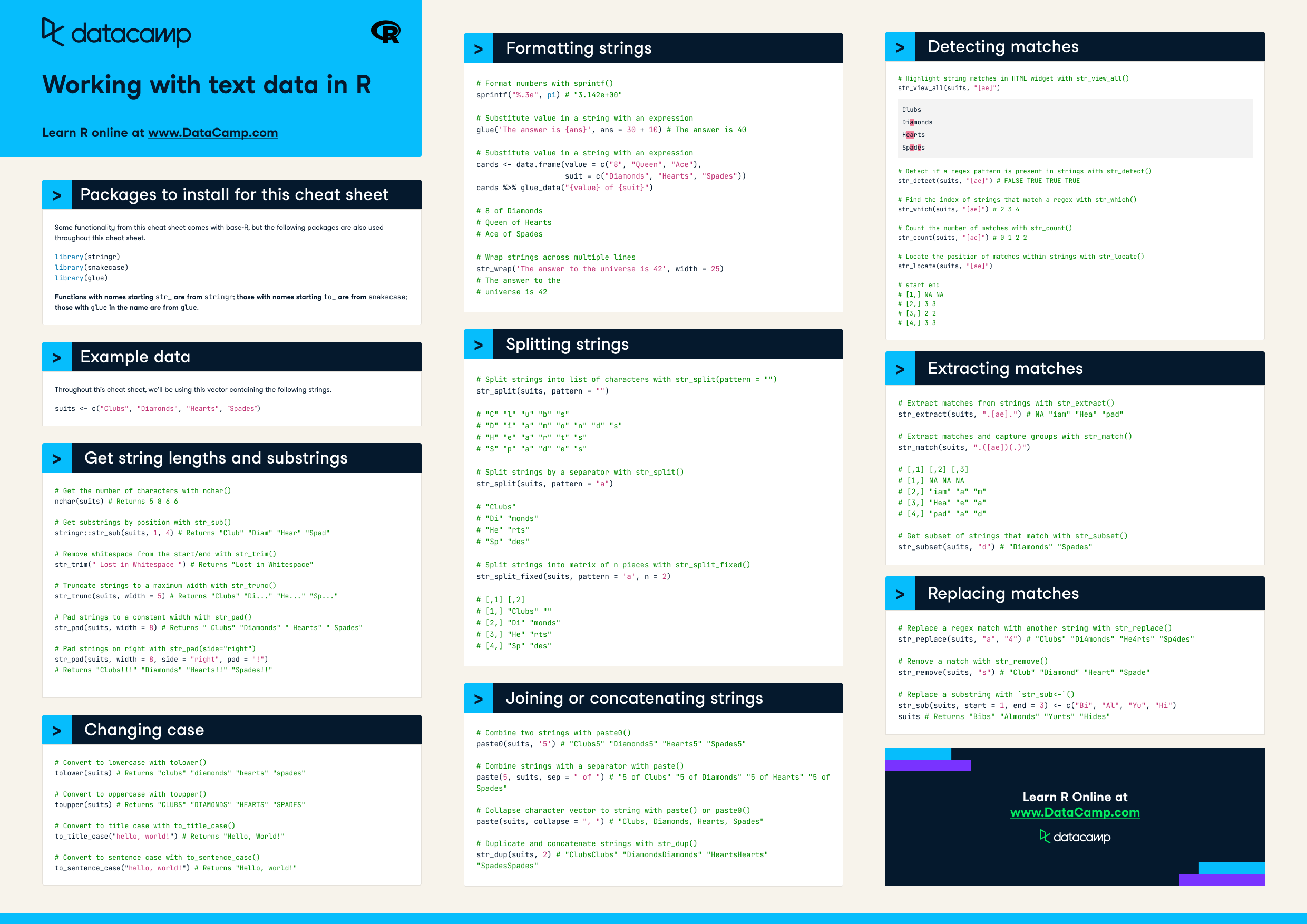Text Data In R Cheat Sheet
Welcome to our cheat sheet for working with text data in R! This resource is designed for R users who need a quick reference guide for common tasks related to cleaning, processing, and analyzing text data.
Dec 2022 · 5 min read
Have this cheat sheet at your fingertips
Download PDFHave this cheat sheet at your fingertips
Download PDFTopics
RelatedSee MoreSee More
cheat sheet
Getting Started with R Cheat Sheet
This cheat sheet will cover an overview of getting started with R. Use it as a handy, high-level reference for a quick start with R. For more detailed R Cheat Sheets, follow the highlighted cheat sheets below.
Richie Cotton
9 min
cheat sheet
Dates and Times in R Cheat Sheet
Welcome to our cheat sheet for working with dates and times in R! This resource provides a list of common functions and packages for manipulating, analyzing, and visualizing data with dates and times.
Richie Cotton
1 min
cheat sheet
Text Data In Python Cheat Sheet
Welcome to our cheat sheet for working with text data in Python! We've compiled a list of the most useful functions and packages for cleaning, processing, and analyzing text data in Python, along with clear examples and explanations, so you'll have everything you need to start developing!
Richie Cotton
4 min
cheat sheet
The data.table R Package Cheat Sheet
The data.table cheat sheet helps you master the syntax of this R package, and helps you to do data manipulations.
Karlijn Willems
7 min
cheat sheet
Data Manipulation with dplyr in R Cheat Sheet
With this data manipulation with dplyr in the R cheat sheet, you'll have a handy reference guide in your R upskilling journey.
Richie Cotton
7 min
tutorial
The data.table R Package Cheat Sheet
The data.table cheat sheet helps you master the syntax of this R package, and helps you to do data manipulations.
Karlijn Willems
2 min
